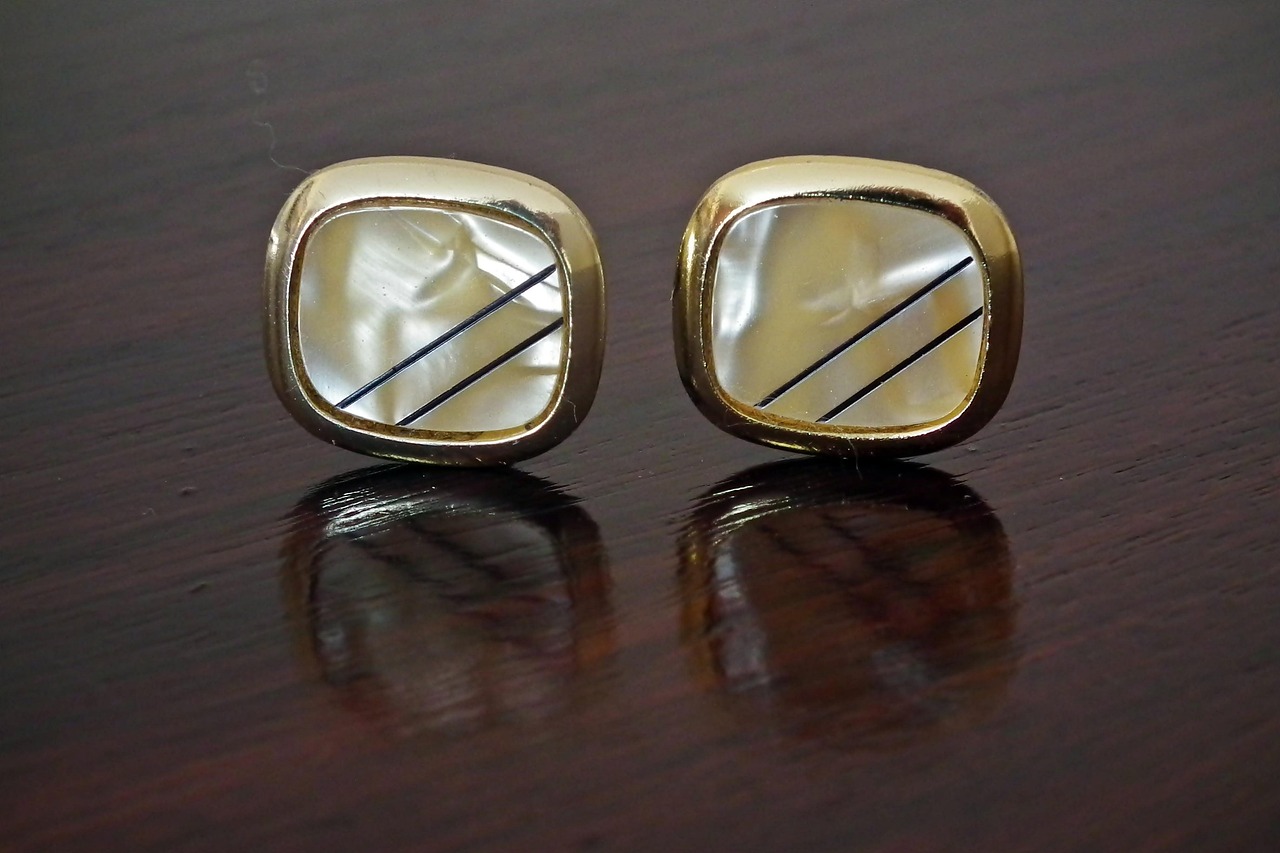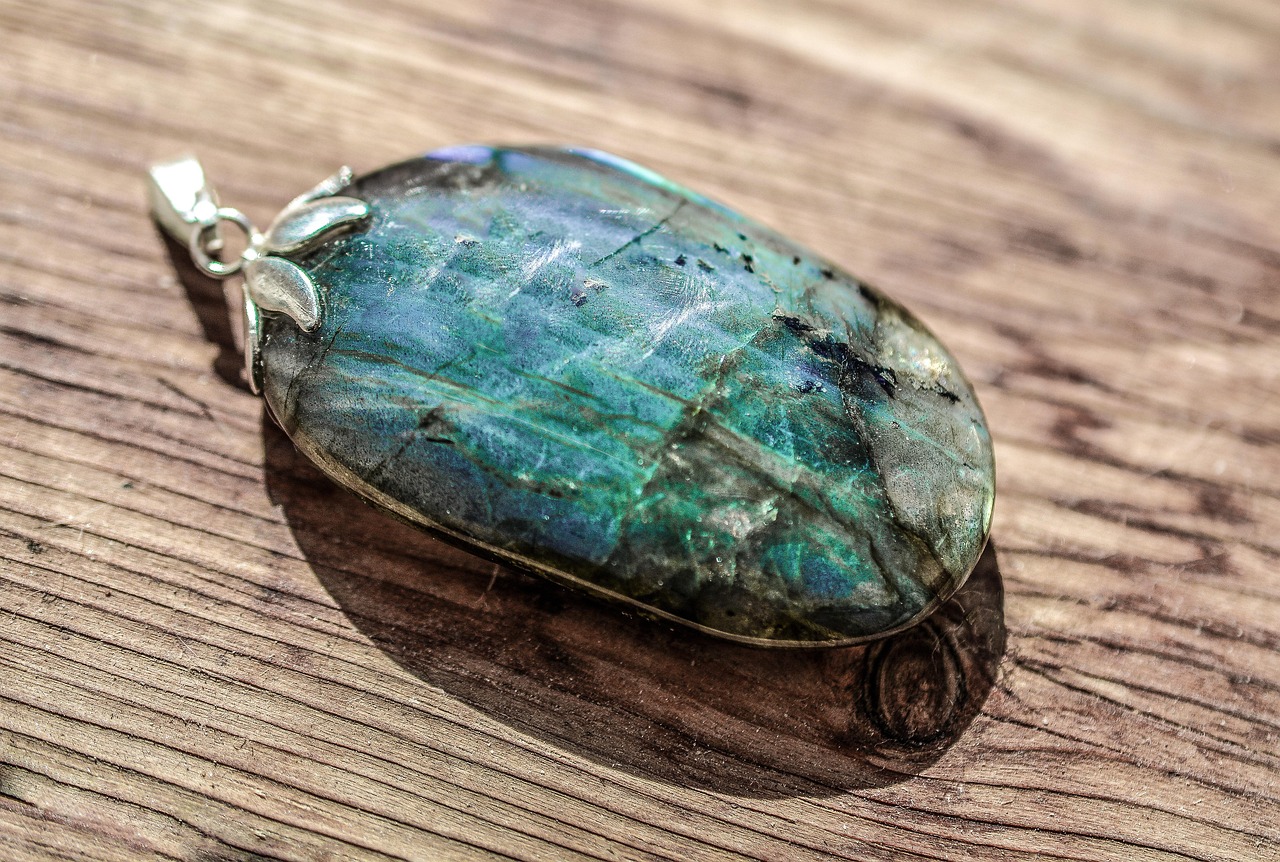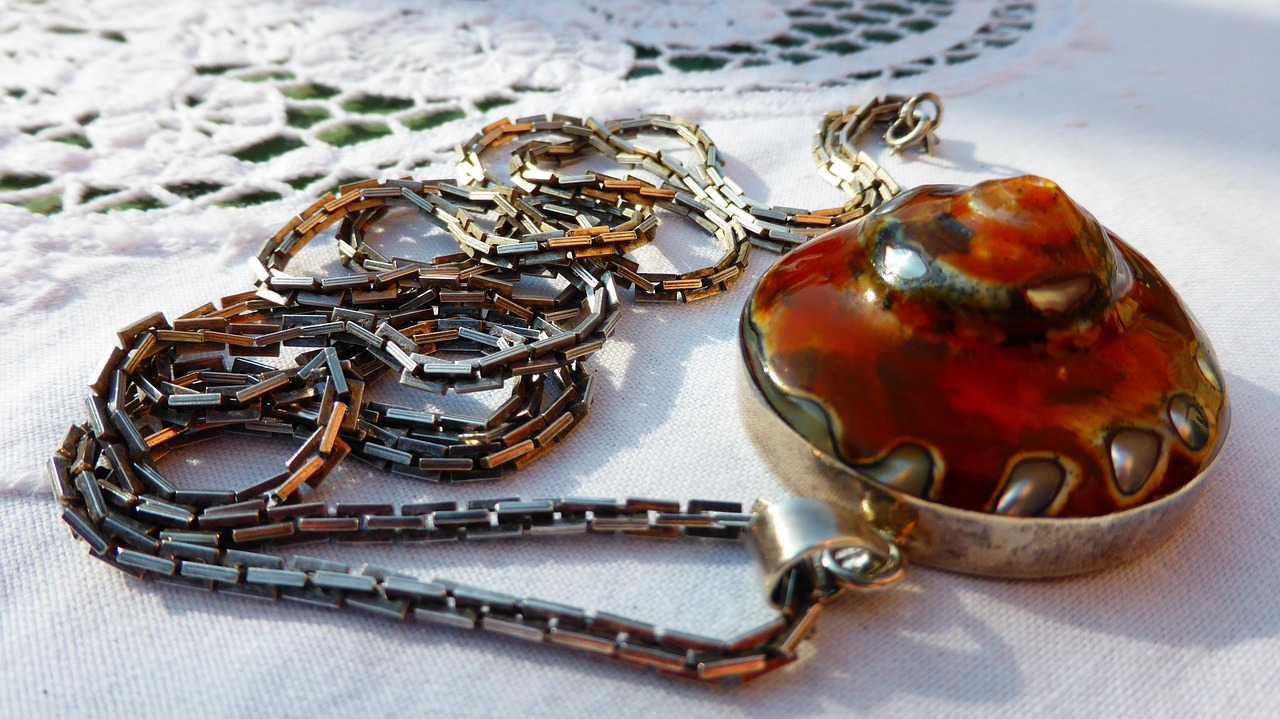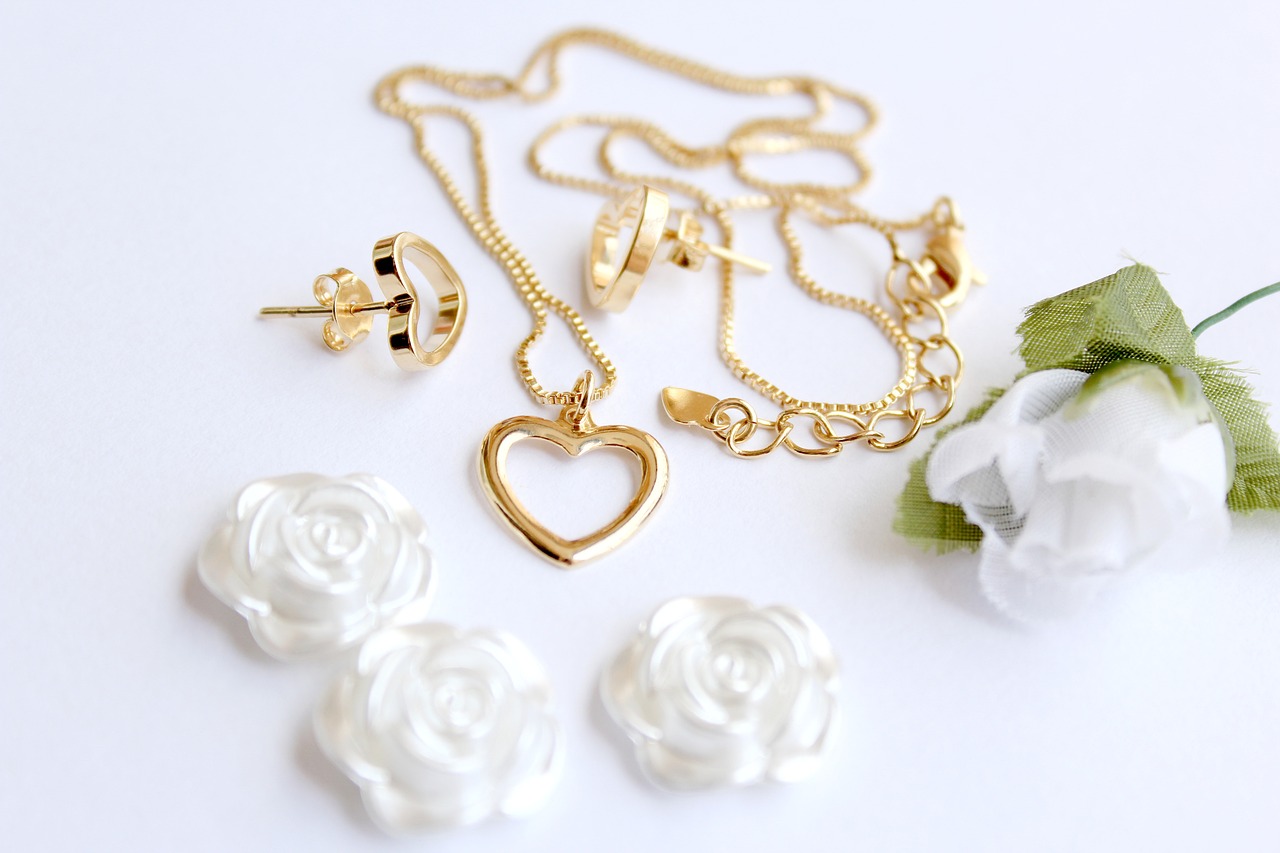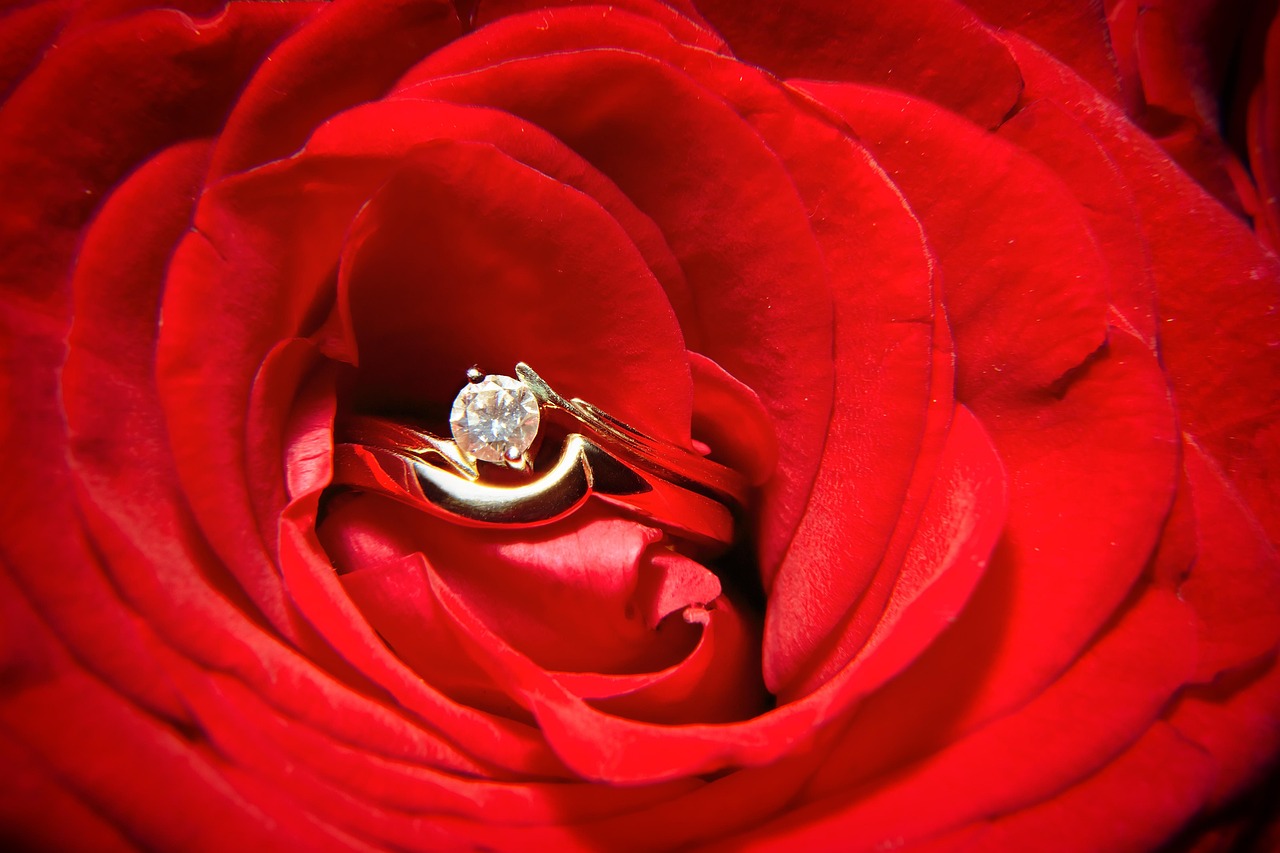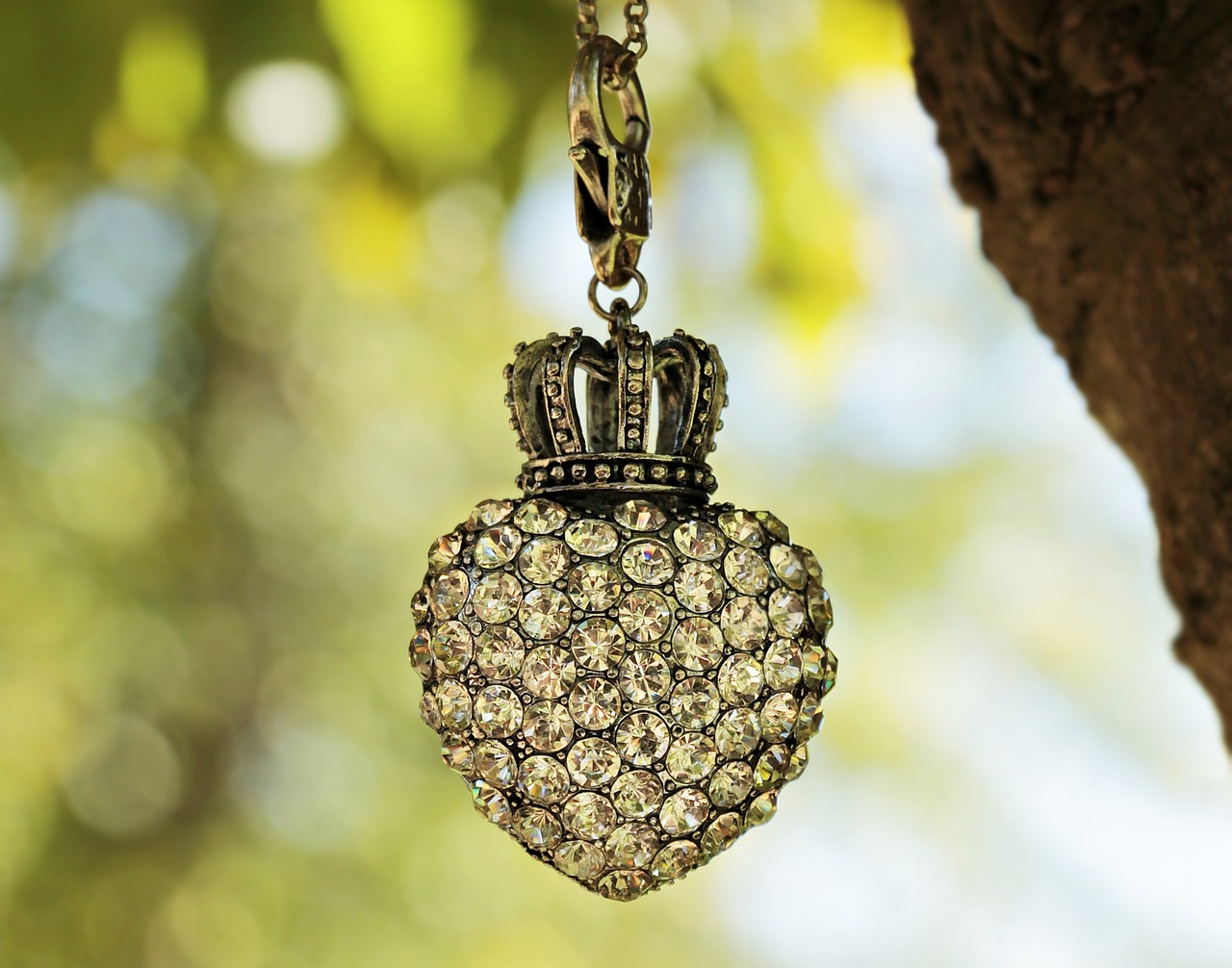Baking soda and toothpaste are two common household items that many people turn to when it comes to cleaning jewelry. This article delves into their effectiveness as cleaning agents, examining their benefits, methods of use, and potential drawbacks. By doing so, we aim to provide a comprehensive guide for jewelry care that helps you maintain the shine and integrity of your cherished pieces.
Baking soda is renowned for its gentle abrasive properties. It can effectively remove tarnish and grime from various types of jewelry, including silver and gold, without causing damage. Additionally, it is an affordable and non-toxic option, making it a popular choice for those looking to clean their jewelry safely.
Toothpaste contains mild abrasives and cleaning agents that can help polish jewelry. The composition of toothpaste allows it to lift dirt and restore shine. However, it is essential to choose the right type of toothpaste to avoid potential risks associated with its use on different materials.
Not all toothpaste is suitable for jewelry cleaning. Certain ingredients, such as whitening agents and strong abrasives, can scratch delicate jewelry surfaces. It is crucial to read the label and avoid any toothpaste that contains these harmful components to ensure safe cleaning practices.
Natural toothpastes often contain fewer harsh chemicals and abrasives, making them a safer choice for cleaning jewelry. These options can provide effective cleaning results without the risk of damaging your jewelry.
Selecting the appropriate toothpaste is vital for effective cleaning. Look for non-whitening, non-gel formulas that are gentle yet effective on various jewelry types. This ensures that your cleaning efforts yield the desired results without compromising the integrity of your jewelry.
Baking soda is generally safe for most metals, including silver and gold. However, certain materials like pearls and opals require special care. Always consider the specific material of your jewelry before applying baking soda to avoid any potential damage.
Cleaning jewelry with baking soda is straightforward. Here’s a simple guide:
- Gather Your Tools: You will need a soft cloth, a bowl, and a toothbrush.
- Prepare the Baking Soda Solution: Mix baking soda with water to form a paste.
- Apply the Paste: Use the toothbrush to gently scrub the jewelry with the paste.
- Rinse Thoroughly: Ensure all baking soda is washed off with lukewarm water.
- Dry Carefully: Use a soft cloth to dry your jewelry and restore its shine.
While baking soda and toothpaste are generally safe, there are risks involved. Over-scrubbing or using the wrong type of toothpaste can lead to scratches or dullness. It’s essential to be gentle and monitor your jewelry for any signs of damage during the cleaning process.
Recognizing signs of damage, such as scratches or dullness, is crucial. If you notice any changes in the appearance of your jewelry, it may indicate that the cleaning method used was inappropriate for the material.
In conclusion, baking soda and toothpaste can be effective cleaning agents for jewelry when used correctly. By following the guidelines outlined in this article, you can ensure that your jewelry remains beautiful and well-maintained without the need for harsh chemicals.
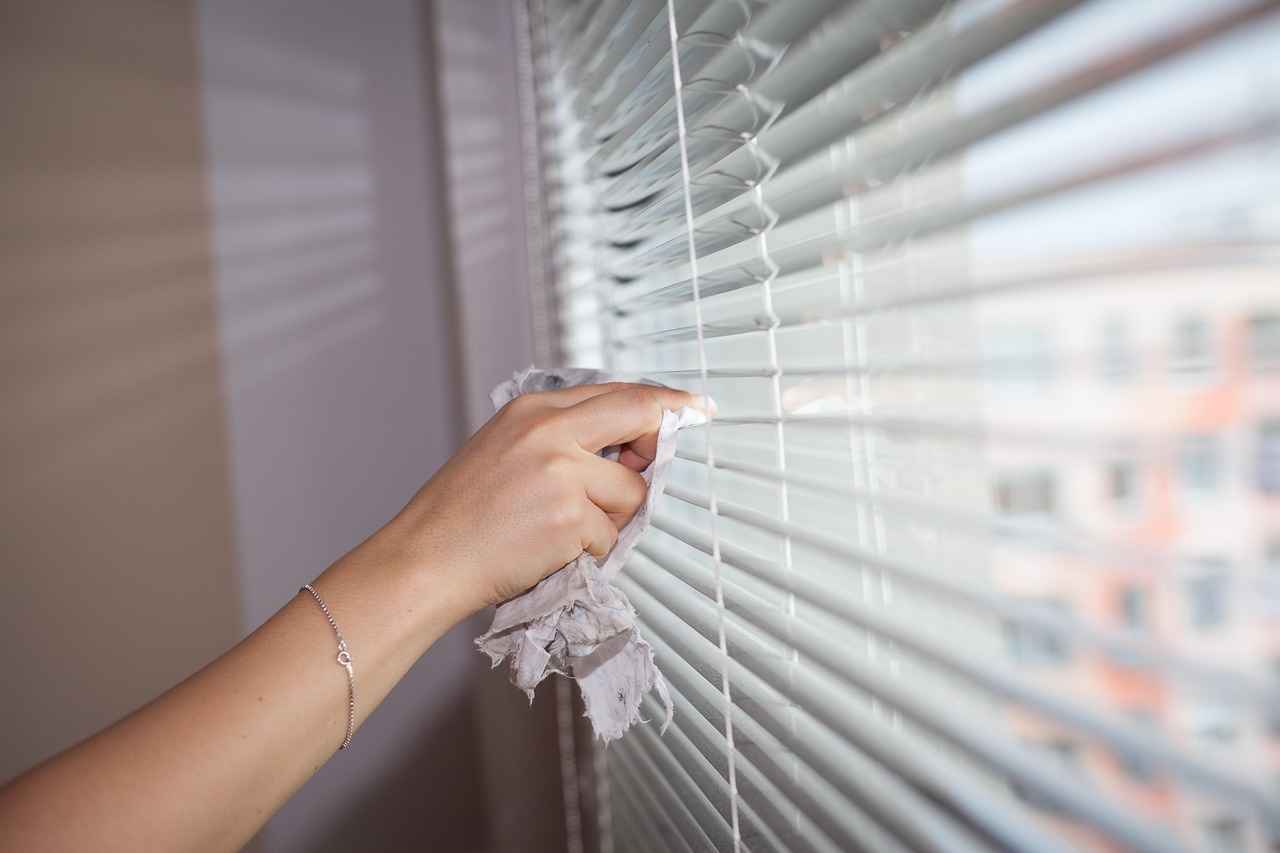
What Are the Benefits of Using Baking Soda for Jewelry Cleaning?
Baking soda, a common household item, is renowned for its versatility and effectiveness in various cleaning tasks. When it comes to jewelry cleaning, baking soda stands out due to its gentle abrasive properties. This makes it an ideal choice for removing tarnish and grime from different types of jewelry without inflicting damage. In this section, we will explore the key benefits of using baking soda for jewelry cleaning.
- Non-Toxic and Safe: One of the most significant advantages of baking soda is that it is a non-toxic cleaning agent. Unlike many commercial cleaners that contain harsh chemicals, baking soda is safe for both the user and the environment.
- Effective Tarnish Removal: Baking soda is particularly effective at removing tarnish from silver jewelry. When combined with water, it forms a paste that can be gently rubbed onto the jewelry, effectively lifting away tarnish and restoring shine.
- Cost-Effective: Baking soda is inexpensive and widely available, making it a budget-friendly option for jewelry cleaning. You can achieve excellent results without spending a fortune on specialized cleaning products.
- Versatile Cleaning Agent: Beyond jewelry, baking soda can be used to clean various surfaces and items around the home, making it a versatile addition to your cleaning arsenal.
- Easy to Use: The process of cleaning jewelry with baking soda is straightforward. Simply mix it with water to create a paste, apply it to your jewelry, and rinse. This simplicity makes it accessible for everyone.
- Gentle on Delicate Surfaces: Unlike some abrasive cleaners, baking soda is gentle enough for use on delicate jewelry materials, such as gold and platinum, ensuring that your pieces remain undamaged.
To maximize the benefits of baking soda for jewelry cleaning, it is essential to follow proper techniques. For instance, creating a paste with water and applying it with a soft cloth or toothbrush can help ensure that the cleaning is effective without causing scratches. Always test a small area first, especially on more delicate pieces.
In addition to its cleaning properties, baking soda can also help eliminate odors that may be trapped in jewelry, particularly in pieces that are worn frequently. This added benefit means that not only will your jewelry look clean, but it will also smell fresh.
Overall, the use of baking soda for cleaning jewelry is a practical and effective solution that offers numerous benefits. Its affordability, safety, and effectiveness make it a top choice for anyone looking to maintain the beauty of their jewelry collection.
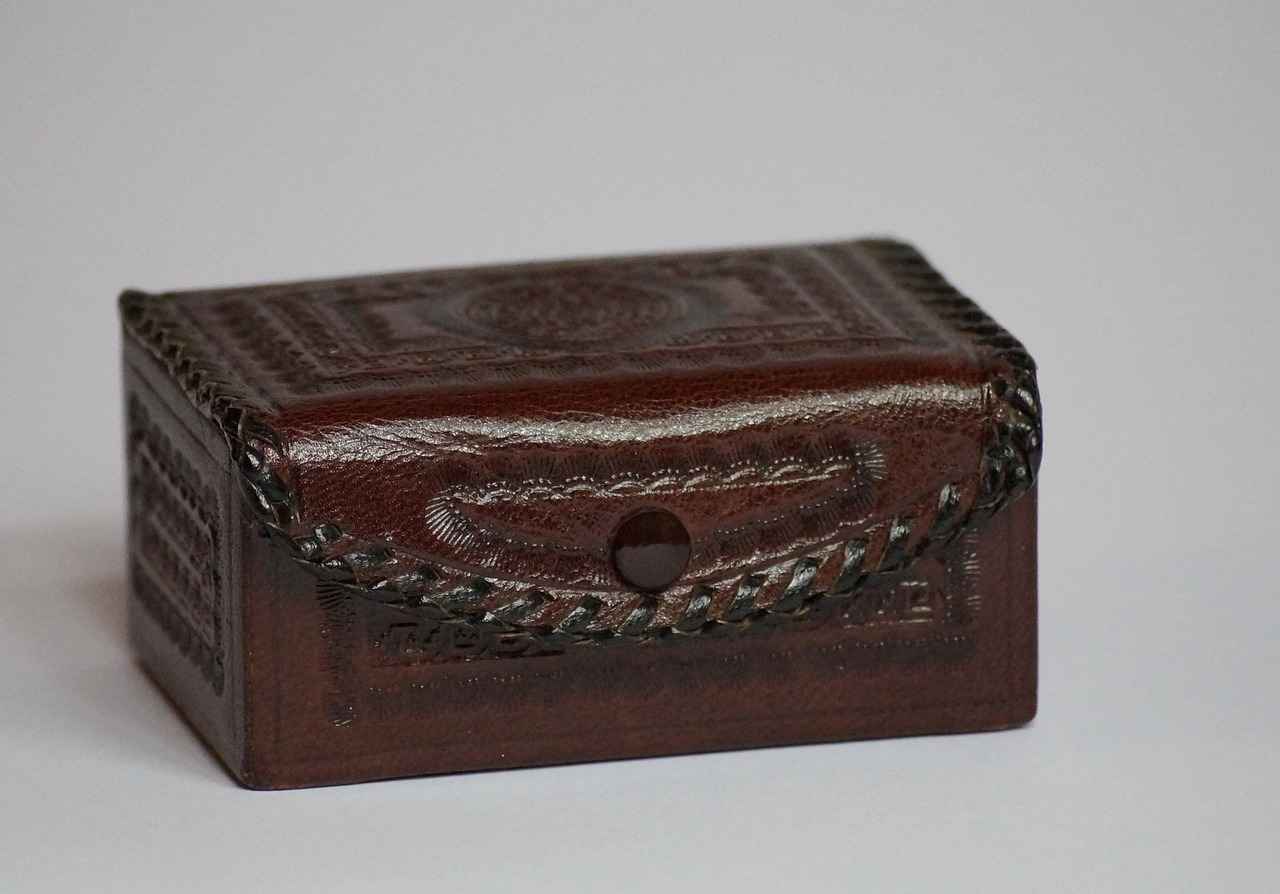
How Does Toothpaste Work for Cleaning Jewelry?
When it comes to cleaning jewelry, many people often wonder about the effectiveness of common household items. One such item is toothpaste, which contains mild abrasives and cleaning agents that can help polish jewelry. Understanding its composition can clarify its effectiveness and potential risks when used on different materials.
Toothpaste is formulated to remove plaque and stains from teeth, but its properties can also be beneficial for cleaning jewelry. The key components of toothpaste include:
- Abrasives: These are tiny particles that help scrub away dirt and tarnish. Common abrasives found in toothpaste include calcium carbonate and silica.
- Surfactants: These agents help to lift and remove grime from surfaces, making it easier to clean.
- Fluoride: While not directly beneficial for jewelry, fluoride can enhance the cleaning process by providing a smoother finish.
When applied to jewelry, the abrasives in toothpaste can effectively polish the surface, removing tarnish and restoring shine. However, it is important to note that not all toothpaste is created equal.
While toothpaste can be an effective cleaning agent, certain ingredients can pose risks to your jewelry. Avoid toothpaste that contains:
- Whitening agents: These can be too abrasive and may scratch delicate surfaces.
- Gels: Gel toothpaste often lacks the necessary abrasives for effective cleaning.
- Strong flavors: Ingredients like menthol can leave residues that are hard to rinse off.
Choosing the right toothpaste is essential for safe cleaning practices. Opt for a non-whitening, non-gel formula that is gentle yet effective.
Natural toothpastes typically contain fewer harsh chemicals and abrasives, making them a safer choice for cleaning jewelry. Ingredients like baking soda or coconut oil can provide effective cleaning without the risk of damage. Exploring these options can lead to better results while maintaining the integrity of your jewelry.
Cleaning jewelry with toothpaste is a straightforward process. Here’s a simple guide:
- Gather your materials: You will need a soft cloth, a small bowl, and a soft-bristled toothbrush.
- Apply toothpaste: Squeeze a small amount of toothpaste onto the toothbrush.
- Gently scrub: Using the toothbrush, gently scrub the jewelry, focusing on crevices and areas with tarnish.
- Rinse thoroughly: Rinse the jewelry under lukewarm water to remove all toothpaste residue.
- Dry with a soft cloth: Pat the jewelry dry with a clean, soft cloth to restore its shine.
Toothpaste can be safely used on most metals, including silver and gold. However, caution is advised when cleaning delicate materials such as pearls and opals, as they can be easily scratched or damaged. Always test a small, inconspicuous area before applying toothpaste to the entire piece.
While toothpaste is generally safe, there are risks involved. Overzealous scrubbing can lead to scratches, particularly on softer metals or stones. Additionally, residue left behind can dull the appearance of your jewelry. Always ensure thorough rinsing and drying after cleaning.
In summary, toothpaste can be an effective option for cleaning jewelry when used correctly. By understanding its composition and following safe cleaning practices, you can maintain the beauty of your jewelry while minimizing the risk of damage.
What Ingredients Should You Avoid in Toothpaste?
When it comes to cleaning jewelry, many people often turn to common household items, including toothpaste. However, it is crucial to understand that not all toothpaste is suitable for this purpose. This question is vital for anyone looking to maintain the integrity and shine of their precious items.
Toothpaste is formulated with various ingredients designed to clean teeth effectively. While some of these components can help polish jewelry, others can cause significant damage. Here are some ingredients to be cautious of:
- Whitening Agents: Many commercial toothpastes contain whitening agents like hydrogen peroxide or baking soda in high concentrations. These chemicals can be too harsh for delicate jewelry, leading to scratches or dullness.
- Strong Abrasives: Toothpastes often include abrasives such as silica or calcium carbonate. While these help in removing plaque from teeth, they can scratch softer metals and gemstones.
- Fluoride: Although fluoride is beneficial for dental health, it can leave a residue on jewelry that may be difficult to remove, affecting its appearance over time.
- Coloring Agents: Artificial dyes and coloring agents can stain jewelry, particularly porous materials like pearls and opals, making them look less appealing.
- Fragrances: Scented toothpastes may contain additional chemicals that could react negatively with certain metals, leading to tarnishing or discoloration.
Understanding which ingredients can be harmful is essential for safe cleaning practices. Using toothpaste that contains any of the aforementioned components can lead to irreversible damage to your jewelry. For instance, a beautiful silver necklace might lose its luster due to scratches caused by abrasive particles. Similarly, gemstones like emeralds or opals, which are softer, could be severely scratched, losing their brilliance and value.
If you’re concerned about the ingredients in conventional toothpaste, consider using natural toothpastes that are free from harsh chemicals. These often contain fewer abrasive substances and are gentler on jewelry. Look for products labeled as non-whitening and free from artificial colors and fragrances.
When selecting a toothpaste for cleaning jewelry, keep the following tips in mind:
- Opt for non-gel formulas that are less abrasive.
- Choose whitening-free options to avoid harsh chemicals.
- Read labels carefully to ensure the absence of strong abrasives and harmful additives.
In summary, while toothpaste can be a convenient cleaning agent for jewelry, it is essential to be aware of the ingredients it contains. Avoiding whitening agents, strong abrasives, and other harmful components will help preserve the beauty and longevity of your jewelry. By making informed choices, you can ensure that your cherished pieces remain as stunning as the day you bought them.
Are Natural Toothpastes a Safer Option?
When it comes to cleaning jewelry, the choice of cleaning agents can significantly impact the results. One option that has gained popularity is natural toothpaste. Unlike conventional toothpastes, which often contain a plethora of harsh chemicals and abrasive substances, natural toothpastes are formulated with gentler ingredients. This makes them a safer choice for cleaning delicate jewelry pieces.
Natural toothpastes typically utilize ingredients derived from nature, such as baking soda, essential oils, and plant extracts. These components not only clean effectively but also minimize the risk of damaging your jewelry. Using natural toothpaste can help maintain the luster and shine of your pieces without the worry of scratches or tarnishing.
Many natural toothpastes feature mild abrasives like baking soda, which can gently buff away dirt and tarnish. Additionally, they often include essential oils that can provide antibacterial properties, further enhancing the cleaning process. Avoiding harsh chemicals such as sodium lauryl sulfate and artificial colorants makes natural toothpaste a better option for jewelry care.
- Gather Your Supplies: You will need a soft-bristled toothbrush, a small bowl, and a cloth for drying.
- Apply Toothpaste: Squeeze a small amount of natural toothpaste onto the toothbrush.
- Gently Scrub: Carefully scrub the jewelry, focusing on crevices where dirt may accumulate.
- Rinse Thoroughly: Rinse the jewelry under lukewarm water to remove any residue.
- Dry and Polish: Use a soft cloth to dry and polish your jewelry for a sparkling finish.
While natural toothpaste is generally safe, it’s essential to note that not all jewelry materials are suitable for this cleaning method. For instance, gemstones like pearls and opals may be sensitive to even mild abrasives. Always check the specific care instructions for your jewelry before proceeding with any cleaning method.
Natural toothpaste can be particularly effective on silver and gold jewelry, helping to restore their shine without causing harm. However, for intricate pieces or those with delicate settings, it’s advisable to consult a professional jeweler for cleaning recommendations.
Choosing natural toothpaste for cleaning jewelry offers several advantages:
- Fewer Harsh Chemicals: Reduces the risk of allergic reactions and damage to sensitive skin.
- Environmentally Friendly: Many natural toothpastes are biodegradable and free from harmful ingredients.
- Effective Cleaning: Provides a gentler yet effective cleaning option for maintaining jewelry.
In conclusion, natural toothpaste emerges as a viable alternative for cleaning jewelry. Its gentle formulation minimizes the risk of damage while effectively removing dirt and tarnish. By opting for natural toothpaste, you can ensure that your beloved jewelry remains in pristine condition, showcasing its beauty for years to come.
How to Choose the Right Toothpaste for Jewelry Cleaning?
When it comes to maintaining the beauty and shine of your jewelry, choosing the right toothpaste for cleaning is essential. Many people may not realize that the toothpaste they use for their oral hygiene can also serve as an effective cleaning agent for their precious items. However, not all toothpastes are created equal, and understanding what to look for is crucial.
Toothpaste contains mild abrasives and cleaning agents that can help remove dirt and tarnish from jewelry surfaces. The gentle scrubbing action can polish metals and restore their luster without causing significant harm. However, it’s essential to choose the right formulation to avoid potential damage.
- Non-whitening formulas: These toothpastes do not contain harsh chemicals that can scratch delicate surfaces.
- Non-gel varieties: Gel toothpastes often contain dyes and other additives that may not be suitable for jewelry cleaning.
- Mild abrasives: Look for toothpastes that use gentle polishing agents rather than strong abrasives.
While selecting toothpaste for jewelry cleaning, it’s important to be aware of certain ingredients that can be harmful:
- Whitening agents: These can be too abrasive and may damage softer materials.
- Strong flavors: Ingredients like mint or cinnamon can leave residues that are difficult to rinse off.
- Coloring agents: Dyes can stain jewelry, particularly porous materials like pearls.
Natural toothpastes often contain fewer harsh chemicals, making them a safer option for cleaning jewelry. Many of these products focus on using gentle, plant-based ingredients that can effectively clean without risking damage. However, it’s still essential to check the label for any potentially harmful additives.
Once you have selected the appropriate toothpaste, here’s a simple method to clean your jewelry:
- Apply a small amount of toothpaste to a soft cloth or a soft-bristled toothbrush.
- Gently rub the jewelry, focusing on areas with tarnish or dirt.
- Rinse thoroughly under lukewarm water to remove all toothpaste residue.
- Dry the jewelry with a clean, soft cloth.
Toothpaste can be used on various jewelry materials, including:
- Gold: It is generally safe, but always test on a small area first.
- Silver: Toothpaste can effectively remove tarnish.
- Stainless steel: It can benefit from a good polish.
However, be cautious with soft stones like opals and pearls, as they may scratch or become damaged.
Regular cleaning is important, but over-cleaning can lead to wear and tear. Aim to clean jewelry every few months or as needed, depending on how often you wear it.
In conclusion, selecting the right toothpaste for jewelry cleaning can make a significant difference in maintaining the shine and integrity of your pieces. By choosing non-whitening, non-gel formulas and avoiding harsh ingredients, you can effectively clean your jewelry while minimizing the risk of damage.
What Jewelry Materials Can Be Cleaned with Baking Soda?
Baking soda is a versatile and effective cleaning agent that is widely used in households. When it comes to jewelry cleaning, it is particularly valued for its gentle abrasive properties. This makes it suitable for a variety of metals, including silver and gold. However, caution is necessary when cleaning delicate materials, such as pearls and opals, which require special care to prevent damage.
- Silver: Baking soda is highly effective for cleaning tarnished silver jewelry. It can restore shine without scratching the surface.
- Gold: Both yellow and white gold can be safely cleaned with baking soda, helping to remove dirt and restore luster.
- Stainless Steel: Jewelry made from stainless steel benefits from baking soda, as it removes grime while being non-abrasive.
- Costume Jewelry: Many costume jewelry pieces can be cleaned with baking soda, but it’s essential to test a small area first to ensure no damage occurs.
While baking soda is safe for many metals, certain materials require extra caution:
- Pearls: Pearls are delicate and can be easily scratched. It is advisable to avoid using baking soda on pearl jewelry, as the abrasive nature may harm their surface.
- Opals: Similar to pearls, opals are porous and can absorb moisture and chemicals. Using baking soda can lead to damage, so it’s best to clean them with a damp cloth instead.
- Turquoise: This stone can also be sensitive to abrasives. A gentle cleaning method is recommended to preserve its vibrant color.
Understanding which materials can be safely cleaned with baking soda is crucial for maintaining the integrity of your jewelry. Using the wrong cleaning method can lead to irreversible damage, diminishing the beauty and value of your pieces. By knowing the properties of different materials, you can make informed decisions that will keep your jewelry looking its best.
- Test First: Always perform a patch test on a small, inconspicuous area before applying baking soda to the entire piece.
- Gentle Application: Use a soft cloth or a toothbrush with soft bristles to apply the baking soda paste gently.
- Rinse Thoroughly: After cleaning, ensure that all baking soda residue is rinsed off to prevent any potential buildup.
By following these guidelines, you can effectively clean your jewelry while ensuring its longevity and beauty. Remember, when in doubt, consult a professional jeweler for advice on how to care for your specific pieces.

Step-by-Step Guide: How to Clean Jewelry with Baking Soda
Cleaning jewelry can seem daunting, but using baking soda offers a simple and effective solution. This step-by-step guide will walk you through the process, ensuring that your jewelry shines without risking damage.
Follow these steps to clean your jewelry safely and effectively:
- Gather Your Materials: You will need:
- Baking soda
- Water
- A soft cloth
- A small bowl
- A soft toothbrush (optional)
- Prepare the Baking Soda Solution: In your small bowl, mix three parts baking soda with one part water to create a paste. Ensure the mixture is not too watery, as you want it to adhere to your jewelry.
- Apply the Paste: Using your fingers or a soft toothbrush, gently apply the baking soda paste to your jewelry. Focus on areas with tarnish or grime, and be careful not to scrub too hard, especially on delicate pieces.
- Let It Sit: Allow the paste to sit on the jewelry for about 10-15 minutes. This waiting period helps the baking soda break down dirt and tarnish effectively.
- Rinse Thoroughly: After the waiting period, rinse your jewelry under lukewarm water. Make sure all the baking soda residue is washed away, as leftover paste can cause dullness.
- Dry and Polish: Use a soft cloth to dry your jewelry gently. This step not only removes moisture but also helps restore shine. If desired, you can buff the jewelry lightly to enhance its brilliance.
Baking soda is safe for cleaning most metals, including silver and gold. However, be cautious with more delicate materials like pearls and opals, which may require specialized cleaning methods. Always check the specific care instructions for your jewelry.
While baking soda is generally safe, overuse can lead to scratches or loss of luster on softer metals or finishes. Always test a small area first if you are unsure about the jewelry’s durability. Additionally, avoid using baking soda on pieces with intricate settings or delicate stones.
After cleaning, inspect your jewelry for any signs of damage. Look for:
- Scratches or dull spots
- Loose stones or settings
- Changes in color or finish
If you notice any of these issues, consider seeking professional cleaning services for your jewelry in the future.
By following this straightforward guide, you can maintain the beauty of your jewelry using baking soda as an effective cleaning agent. Regular maintenance not only keeps your pieces looking their best but also extends their lifespan.
What Tools Do You Need for Cleaning Jewelry?
Cleaning jewelry can seem daunting, but having the right tools is crucial for a successful and efficient process. When it comes to maintaining the sparkle of your precious items, understanding the tools required can significantly enhance your cleaning experience. Here, we will discuss the essential tools needed for cleaning jewelry, their importance, and how they contribute to achieving optimal results.
- Soft Cloth: A soft, lint-free cloth is vital for polishing your jewelry after cleaning. It helps remove any remaining dirt and ensures a brilliant shine without scratching the surface.
- Bowl: A small bowl is necessary for mixing your cleaning solutions, whether you’re using baking soda, toothpaste, or a specialized jewelry cleaner. Choose a non-abrasive bowl to avoid any potential damage to your jewelry.
- Toothbrush: A soft-bristled toothbrush is perfect for reaching intricate areas of your jewelry, such as settings and crevices. Its gentle bristles effectively lift dirt and grime without harming delicate surfaces.
- Water: Clean water is essential for rinsing your jewelry after cleaning. It helps wash away any residue from cleaning agents, leaving your pieces sparkling and fresh.
- Jewelry Cleaning Solution: While baking soda and toothpaste are popular choices, having a dedicated jewelry cleaning solution can be beneficial. These solutions are formulated to target specific types of metals and stones, ensuring safe and effective cleaning.
Using the right tools not only makes the cleaning process easier but also enhances the overall effectiveness of your efforts. For instance, a soft cloth can remove smudges and fingerprints, while a toothbrush can access hard-to-reach spots that a cloth alone cannot. By using appropriate tools, you minimize the risk of damaging your jewelry and ensure a thorough cleaning.
To maximize the benefits of your cleaning tools, follow these simple steps:
- Prepare Your Cleaning Solution: Depending on the method you choose, mix your baking soda with water to form a paste or use your jewelry cleaning solution as directed.
- Soak Your Jewelry: If using a solution, soak your jewelry for a few minutes to loosen dirt and grime.
- Gently Scrub: Use the toothbrush to scrub gently, focusing on intricate areas. Be cautious with softer stones like pearls and opals.
- Rinse Thoroughly: Rinse your jewelry under clean water to remove any cleaning residue.
- Dry and Polish: Use the soft cloth to dry and polish your jewelry, restoring its shine.
Always remember to store your jewelry properly to prevent tarnishing and scratches. Use separate compartments in a jewelry box or soft pouches to keep pieces apart. Regular maintenance with the right tools will ensure your jewelry remains in pristine condition for years to come.
In conclusion, investing in the right tools for cleaning jewelry is essential for maintaining its beauty and longevity. By utilizing a soft cloth, bowl, toothbrush, and appropriate cleaning solutions, you can enhance your cleaning routine and achieve remarkable results. Remember, the right tools not only simplify the process but also protect your precious items from potential damage.
How to Prepare the Baking Soda Solution?
Cleaning jewelry can often be a daunting task, especially when considering the potential damage that harsh chemicals can inflict. Fortunately, baking soda offers a gentle yet effective alternative for maintaining the shine and integrity of your cherished pieces. This section will provide a comprehensive guide on how to prepare the baking soda solution for cleaning jewelry.
Creating a baking soda solution is a simple yet essential process for effective jewelry cleaning. Follow these straightforward steps to prepare your solution:
- Gather Your Materials: You will need baking soda, water, a small bowl, and a soft toothbrush or cloth for application.
- Measure the Ingredients: Start by measuring out two tablespoons of baking soda. This quantity is typically sufficient for cleaning several pieces of jewelry.
- Add Water: Gradually add one tablespoon of water to the baking soda. The goal is to create a paste-like consistency. If the mixture is too thick, add a few more drops of water until you achieve the desired texture.
- Mix Thoroughly: Use a spoon to mix the baking soda and water until they are fully combined. The paste should be smooth and not too runny, ensuring it adheres well to the jewelry.
This simple preparation is key to effectively cleaning your jewelry without harsh chemicals. The abrasive nature of baking soda helps to lift tarnish and grime, while the gentle formula ensures that delicate pieces remain unharmed.
Once your baking soda solution is ready, it’s time to apply it to your jewelry. Here’s how:
- Apply the Paste: Use a soft toothbrush or cloth to gently apply the baking soda paste to your jewelry. Focus on areas that show signs of tarnish or dirt.
- Let It Sit: Allow the paste to sit on the jewelry for about 10-15 minutes. This waiting period lets the baking soda work its magic, loosening any stubborn grime.
- Rinse Thoroughly: After the time has elapsed, rinse your jewelry under warm running water. Ensure all baking soda residue is removed to prevent any potential buildup.
- Dry and Polish: Use a soft, lint-free cloth to dry your jewelry completely. This will not only remove moisture but also add a final polish to enhance its shine.
By following these steps, you can effectively clean your jewelry using a baking soda solution. This method is not only cost-effective but also environmentally friendly, making it an excellent choice for those looking to avoid harsh chemicals.
Baking soda is widely recognized for its gentle abrasive properties, making it suitable for various types of jewelry, including silver and gold. Unlike commercial cleaners that may contain damaging chemicals, baking soda offers a safe alternative that protects the integrity of your pieces. Its accessibility and effectiveness make it a go-to option for jewelry care.
In conclusion, preparing a baking soda solution is an easy and effective way to keep your jewelry looking its best. By following the steps outlined above, you can ensure a safe cleaning process that maintains the beauty of your treasured items.
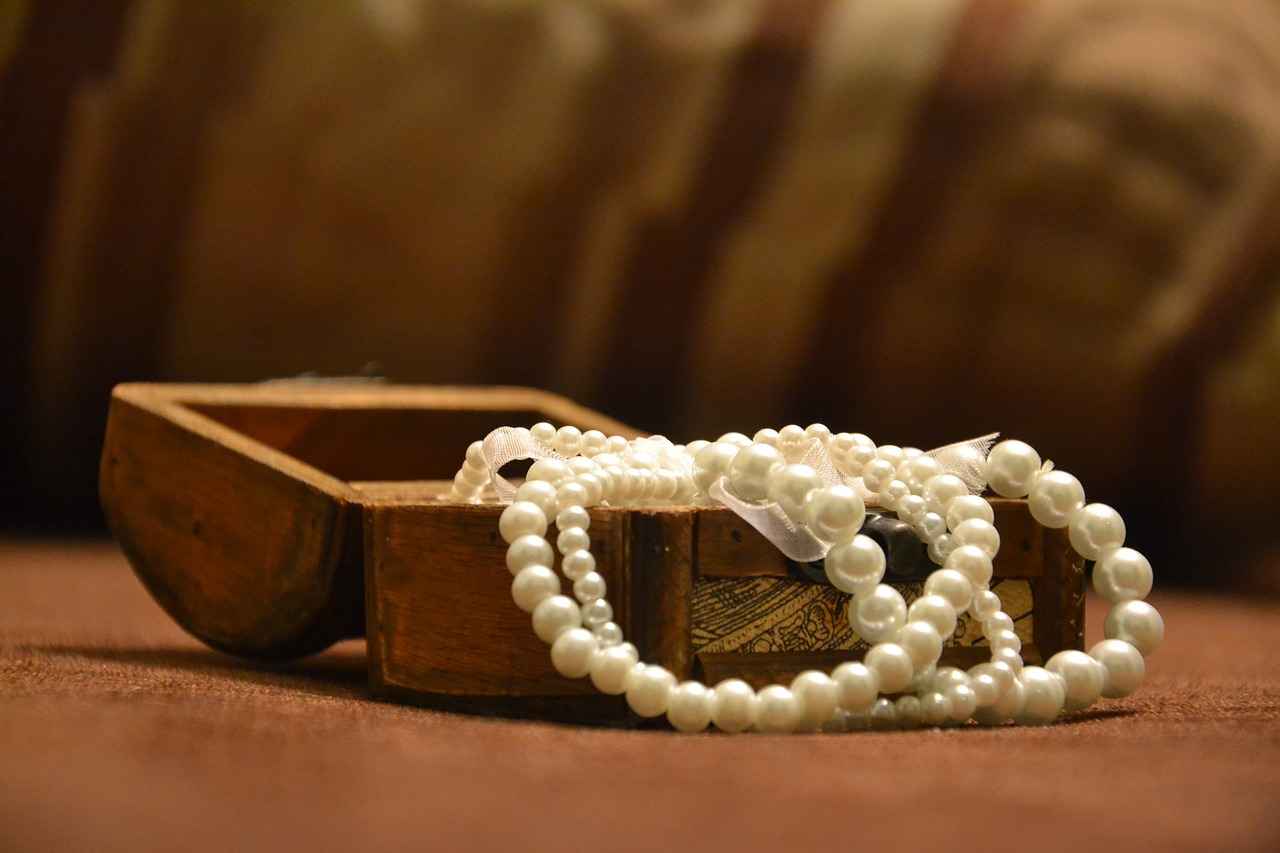
Are There Any Risks to Using Baking Soda or Toothpaste?
When it comes to cleaning jewelry, many people turn to baking soda and toothpaste as affordable and accessible options. While these substances can be effective in removing tarnish and dirt, it is crucial to understand the risks associated with their use. This knowledge can help you avoid potential damage to your precious items during the cleaning process.
Both baking soda and toothpaste possess cleaning properties that can be beneficial for jewelry care. However, it is essential to recognize that improper use can lead to undesirable outcomes. Here are some risks to consider:
- Scratching of Surfaces: Baking soda’s abrasive nature can lead to scratches on softer metals or delicate stones. Jewelry made from gold, silver, or platinum generally withstands this abrasive action, but softer gems like pearls, opal, and turquoise may suffer damage.
- Chemical Reactions: Some toothpastes contain whitening agents or strong abrasives that can react negatively with certain metals. These reactions can cause discoloration or even corrosion over time, especially if used frequently.
- Residue Buildup: Both baking soda and toothpaste can leave behind a residue if not thoroughly rinsed. This residue can dull the shine of your jewelry and attract dirt, negating the cleaning effort.
- Loss of Finish: Polished finishes on jewelry can be compromised by the use of abrasive cleaners. Over time, repeated use of baking soda or toothpaste may lead to a loss of luster and an overall dull appearance.
To mitigate risks, it’s vital to understand the materials your jewelry is made from. For instance, while baking soda is generally safe for silver and gold, it can be harmful to gemstones and pearls. Always check if your jewelry has any special care instructions from the manufacturer.
If you choose to use baking soda or toothpaste for cleaning, here are some best practices:
- Test on a Small Area: Before applying any cleaning agent, test it on a small, inconspicuous area of the jewelry to see if any damage occurs.
- Dilute and Use Sparingly: For baking soda, create a paste with water and apply it gently. For toothpaste, use a non-whitening, non-gel formula and apply it lightly.
- Thorough Rinsing: After cleaning, rinse the jewelry thoroughly under lukewarm water to remove any residue.
- Dry Properly: Use a soft cloth to gently dry your jewelry, avoiding any rough materials that could scratch the surface.
After cleaning, it’s essential to inspect your jewelry for any signs of damage. Look for:
- Scratches: Visible marks on the surface may indicate that the cleaning method was too harsh.
- Dullness: If your jewelry appears less shiny than before, it may have lost its finish.
- Discoloration: Any change in color could signal a reaction with the cleaning agents used.
In conclusion, while baking soda and toothpaste can serve as effective cleaning agents for jewelry, it is crucial to understand the inherent risks. By following safe practices and being mindful of the materials involved, you can maintain the beauty and integrity of your jewelry for years to come.
What Are the Signs of Damage After Cleaning?
Cleaning your jewelry is essential for maintaining its beauty and longevity. However, improper cleaning methods can lead to damage, making it crucial to recognize the signs of wear and tear. Understanding what to look for can help you determine whether your cleaning techniques are suitable for your precious items.
- Scratches: Fine lines on the surface of your jewelry can indicate that abrasive cleaning methods were used. These scratches can dull the shine and overall appearance of your pieces.
- Dullness: A loss of luster is a clear sign that the jewelry has been compromised. This can occur from using harsh chemicals or incorrect cleaning agents that strip away protective coatings.
- Discoloration: If your jewelry appears tarnished or has developed unusual colors, it may be a result of chemical reactions with cleaning products. This is especially common with silver and costume jewelry.
- Loose Stones: If you notice that stones in your jewelry are shifting or feel loose, it may be a result of aggressive cleaning methods that can weaken the settings.
- Cracks or Chips: Fragile materials like pearls or opals can easily chip or crack if not cleaned properly. Always inspect for any visible damage after cleaning.
After cleaning your jewelry, it’s essential to conduct a thorough inspection. Here are some steps to help you assess whether your cleaning methods are appropriate:
- Visual Inspection: Examine your jewelry under good lighting. Look for any scratches, dullness, or discoloration.
- Touch Test: Gently run your fingers over the surface. If you feel roughness or irregularities, this could indicate damage.
- Stone Security: Gently wiggle each stone. If it moves, it may need professional repair.
To prevent damage, it’s crucial to avoid certain cleaning methods:
- Abrasive Cleaners: Products that contain gritty substances can scratch delicate surfaces.
- Harsh Chemicals: Bleach or ammonia can cause discoloration and damage to settings.
- Ultrasonic Cleaners: While effective for some jewelry, these can be too harsh for delicate pieces.
If you notice any signs of damage, it may be time to consult a professional jeweler. They can provide specialized cleaning and repair services that ensure your jewelry remains in pristine condition. Regular maintenance can help prevent damage and extend the life of your cherished items.
In summary, being aware of the signs of damage and assessing your cleaning methods is crucial for preserving the beauty of your jewelry. By taking the time to inspect your pieces and using gentle cleaning techniques, you can maintain their shine and integrity for years to come.
Frequently Asked Questions
- Can I use baking soda on all types of jewelry?
While baking soda is safe for most metals like silver and gold, be cautious with delicate materials such as pearls and opals. They require special care to avoid damage.
- Is toothpaste safe for cleaning jewelry?
Toothpaste can be effective, but you need to choose the right type. Avoid whitening or gel formulas, as they may contain harsh abrasives that can scratch your jewelry.
- How often should I clean my jewelry?
It depends on how often you wear it! If you wear your jewelry daily, consider cleaning it every few weeks. For items worn less frequently, a good clean every few months should suffice.
- What are the signs that my jewelry is damaged after cleaning?
Look for scratches, dullness, or discoloration. If you notice any of these issues, it might be time to reassess your cleaning methods or consult a professional.
- Can I mix baking soda with other cleaning agents?
It’s best to stick with just baking soda and water for jewelry cleaning. Mixing it with other agents can lead to chemical reactions that may damage your jewelry.

